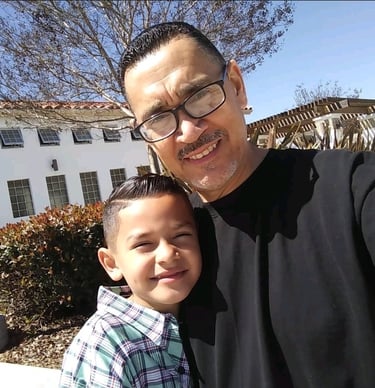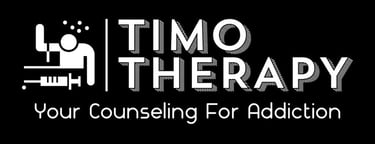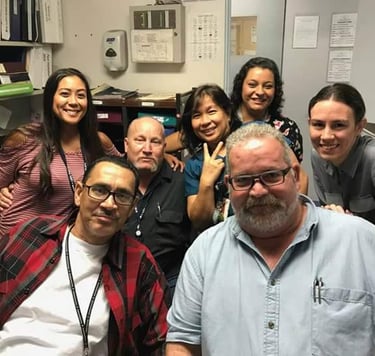Enabling Addiction: A Coping Mechanism or a Family's Pitfall?
Is enabling addiction for a loved one, family or friend, a coping mechanism, and is it time to stop villainizing families for doing what they think is best?
SUPPORT FOR FAMILY & FRIENDS


Understanding Enabling Behavior
Enabling behavior refers to actions taken by individuals, often family members and close friends, that support or facilitate a loved one’s addiction. This can manifest in various forms, primarily through financial support, emotional assistance, and an overall neglect of one's own needs. By providing such support, the enabler unwittingly perpetuates the cycle of addiction, allowing the individual to continue their destructive behaviors without facing the consequences of their actions.
One prevalent form of enabling takes the shape of financial support. Family members may cover expenses, such as rent, bills, or legal fees, under the guise of helping their loved one. While these gestures may be intended to assist, they often remove the immediate pressures that might prompt the individual to seek recovery. Emotional support, another form of enabling behavior, can involve providing constant reassurance or sympathy, thereby allowing the addicted person to avoid accountability. Enablers may convince themselves that they are acting out of love and concern, but this approach can ultimately foster dependency rather than encourage recovery.
The psychological motivations behind enabling behavior are complex. Feelings of guilt, profound love, and a desire to maintain harmony within the family often drive these actions. Enablers may fear that withdrawing support will lead to harm or abandonment, compelling them to prioritize the needs of their loved one above their own. Additionally, the dynamic created by addiction may evoke a sense of crisis, making family members feel as if they must continuously intervene to keep peace and stability.
Understanding these motivations is crucial in recognizing that enabling behavior might stem from a place of care and concern rather than malice. This awareness can help families identify when support becomes enabling, encouraging healthier approaches to addressing addiction challenges.
The Psychology Behind Enabling
Understanding the psychological dynamics of enabling behavior within families affected by addiction is crucial for recognizing its implications. Families often experience overwhelming emotional turmoil when a loved one struggles with substance abuse. Feelings of powerlessness, anxiety, and shame may arise, driving family members to engage in enabling behaviors as a misguided form of support. These actions are sometimes interpreted as expressions of love or concern, yet they often serve to perpetuate the cycle of addiction.
The emotional toll resulting from a loved one’s addiction can lead family members to prioritize immediate relief over long-term solutions. For instance, a parent might cover their child's financial debts to prevent discomfort, failing to recognize that such actions may only fuel further addictive behaviors. This approach often stems from a desire to alleviate feelings of guilt or fear about the consequences of the addiction. However, it undermines the individual's responsibility, creating an unhealthy environment that fosters dependency.
Additionally, the concept of codependency plays a significant role in this dynamic. Codependent individuals typically have an excessive emotional or psychological reliance on their loved ones, often leading them to enable substance abuse through caretaking or rescue behaviors. In such relationships, both parties may become trapped in a vicious cycle, where the enabler's feelings of self-worth are tied to the addicted person's struggles. These patterns prevent meaningful recovery and encourage the continuation of addiction.
As families navigate these complex emotional landscapes, it is essential for them to reflect on their actions and their impact. The journey toward recovery begins with recognizing the difference between helping and enabling. By examining their motivations, families can confront their enabling behaviors, ultimately fostering healthier dynamics and encouraging their loved ones toward recovery.
The Consequences of Enabling
Enabling behavior can have significant and detrimental consequences on individuals struggling with addiction as well as their families. At its core, enabling involves actions that inadvertently support and perpetuate an individual's substance use, thereby delaying their path to recovery. When family members engage in enabling behavior, whether by providing financial support, making excuses, or covering up the individual’s actions, they inadvertently foster a cycle of dependency that can be challenging to break. This dependence may cause the individual to feel less inclined to seek professional help or confront the reality of their situation, thereby prolonging the addiction and potentially worsening their circumstances.
Furthermore, the enabling actions primarily aim to shield the addicted family member from the natural consequences of their behavior, which can lead to a dysfunctional family dynamic. As the enabler becomes increasingly involved in the individual’s struggles, boundaries become blurred, and roles within the family can shift. Often, this dynamic results in one member of the family taking on a caregiver role, while others may feel resentment or frustration. The emotional burden of enabling can lead to increased levels of stress and anxiety among family members, impacting their overall mental health and relationships with one another.
Moreover, prolonged enabling can lead to deteriorating familial relationships. Family members may find themselves consumed by the cycle of addiction, rendering them unable to manage their own lives effectively. This can lead to arguments, withdrawal, and even estrangement between family members as they grapple with conflicting feelings of love, obligation, and frustration. Ultimately, the consequences of enabling extend far beyond the individual struggling with addiction; they create a ripple effect that impacts the entire family unit, potentially leaving lasting scars that hinder healing and recovery.
Breaking the Cycle: Steps Toward Healthy Relationships
Breaking the cycle of enabling within a family requires a commitment to change and a willingness to address underlying issues. The first step towards healthier relationships is the establishment of clear and consistent boundaries. Family members should communicate openly about what behaviors they find unacceptable and outline the consequences of crossing those boundaries. This creates a structure that helps both the individual struggling with addiction and the family members involved. By defining limits, families can reduce the likelihood of enabling behaviors, which often stem from feelings of guilt or fear.
Additionally, seeking support through therapy or support groups can be incredibly beneficial. Therapy can provide a safe space for family members to express their feelings, understand the dynamics of addiction, and learn effective communication strategies. Support groups such as Al-Anon or Nar-Anon offer invaluable resources and fellowship among those who share similar experiences. These groups foster a sense of community, helping families realize they are not alone in their struggles while connecting them with individuals who provide insight and encouragement.
It is vital for families to prioritize not only the well-being of the individual battling addiction but also their mental and emotional health. Self-care is crucial; caregivers must recognize their limits and take steps to prevent burnout. Encouraging self-reflection can help family members reevaluate their roles and the impact of their actions. This awareness fosters a compassionate approach, recognizing that while love and support are paramount, sometimes tough love is necessary for the person struggling to realize the consequences of their choices.
While the road to recovery is challenging, practicing understanding and compassion while maintaining healthy boundaries can help families create an environment where recovery is possible. Such collective efforts can empower individuals to seek help and embrace healthier lifestyles, ultimately breaking the cycle of enabling behaviors.




















